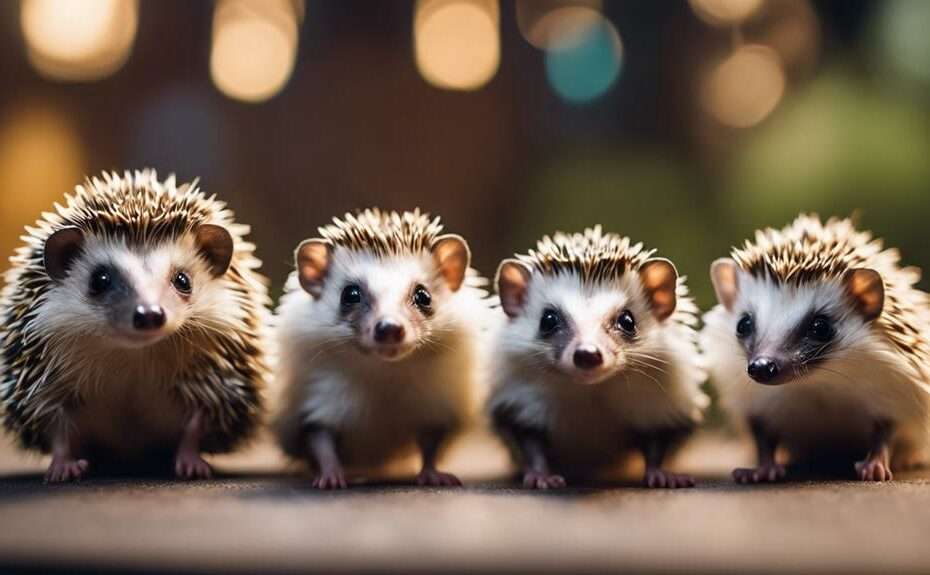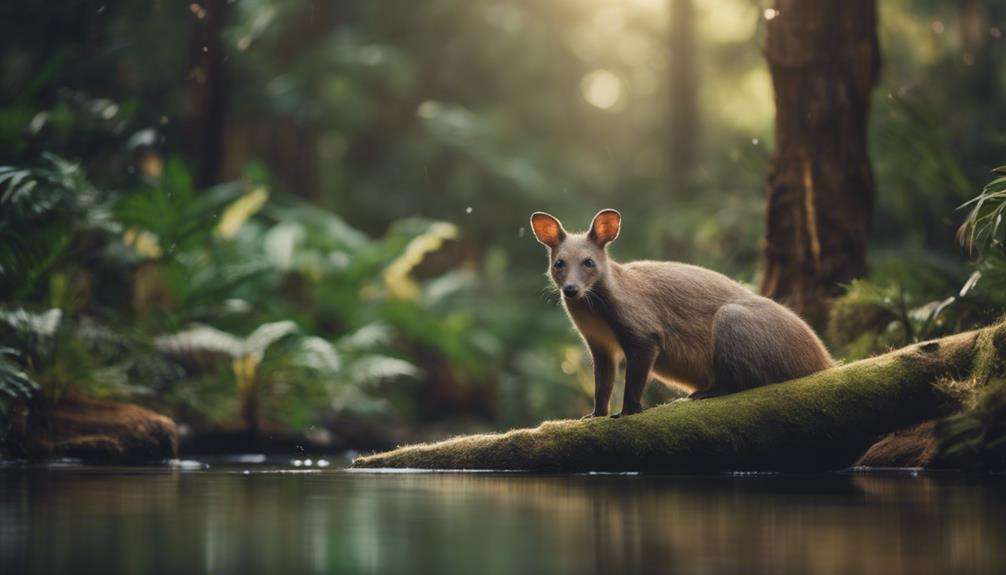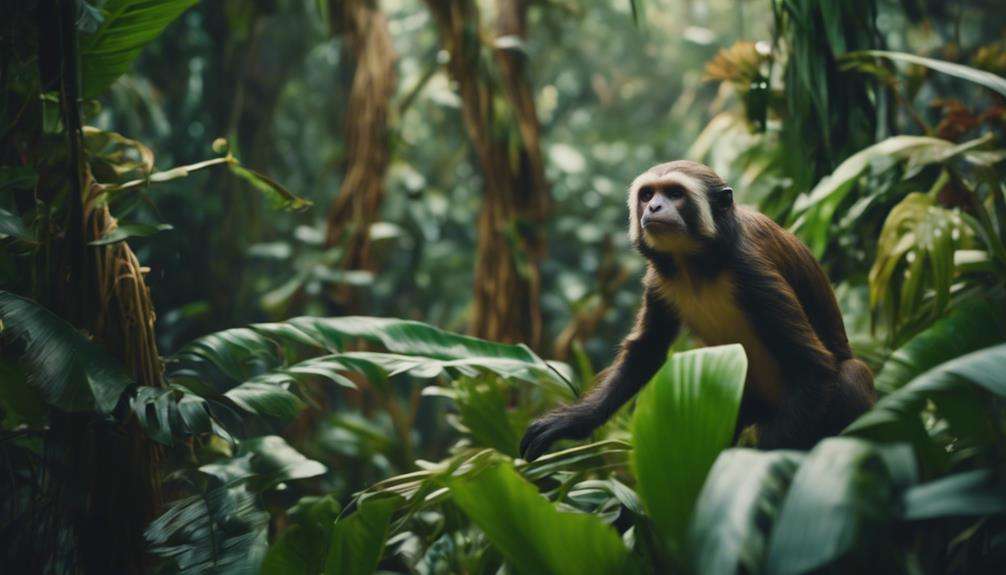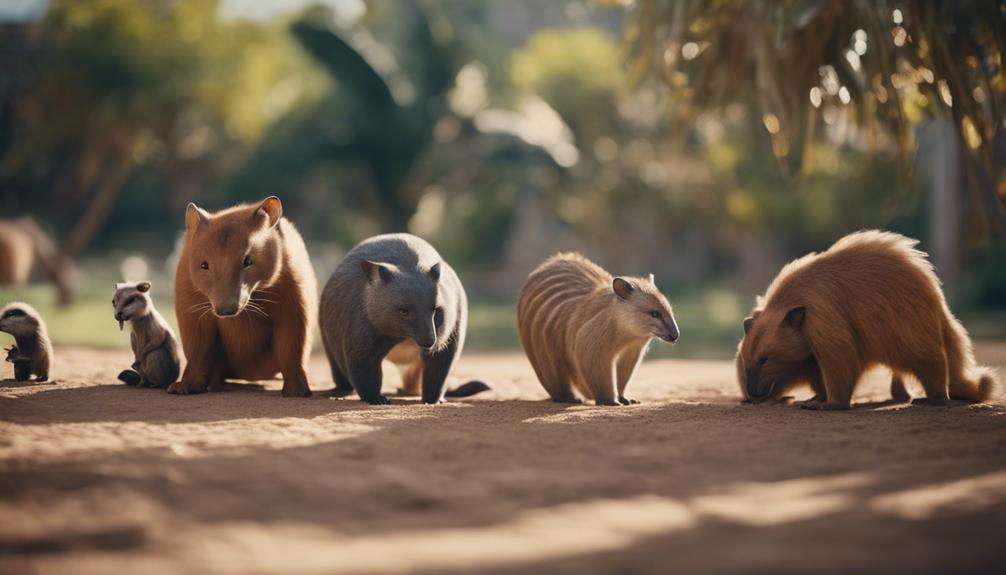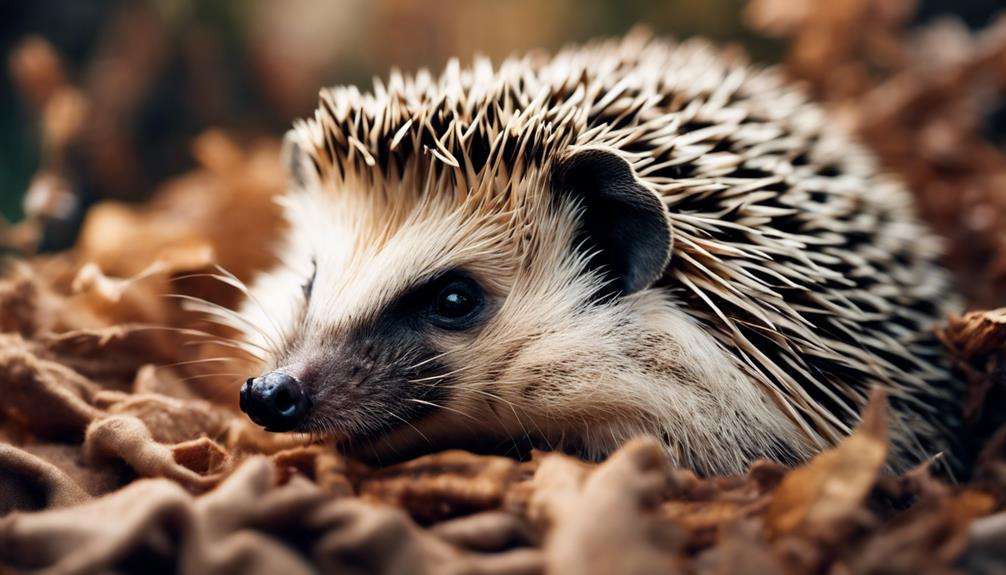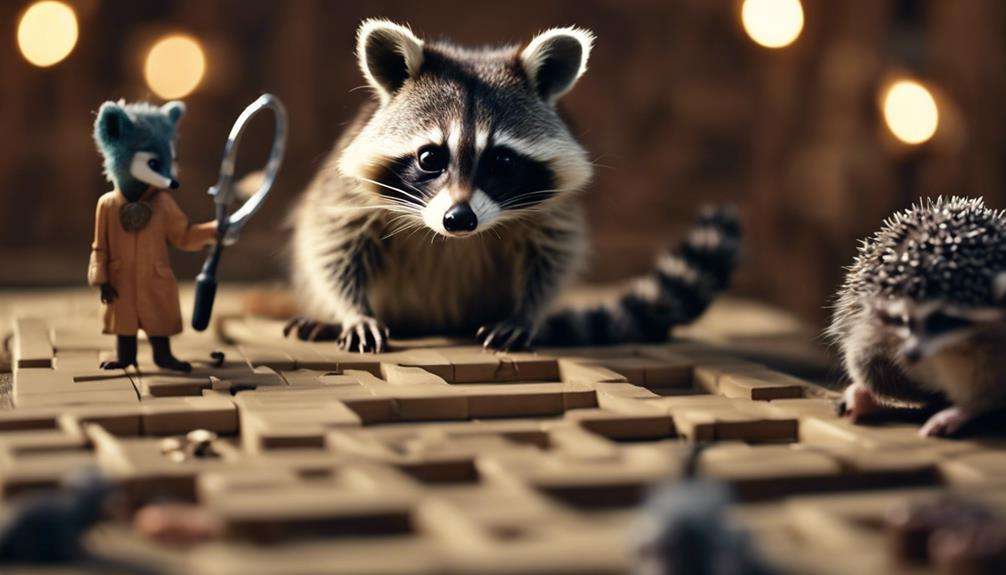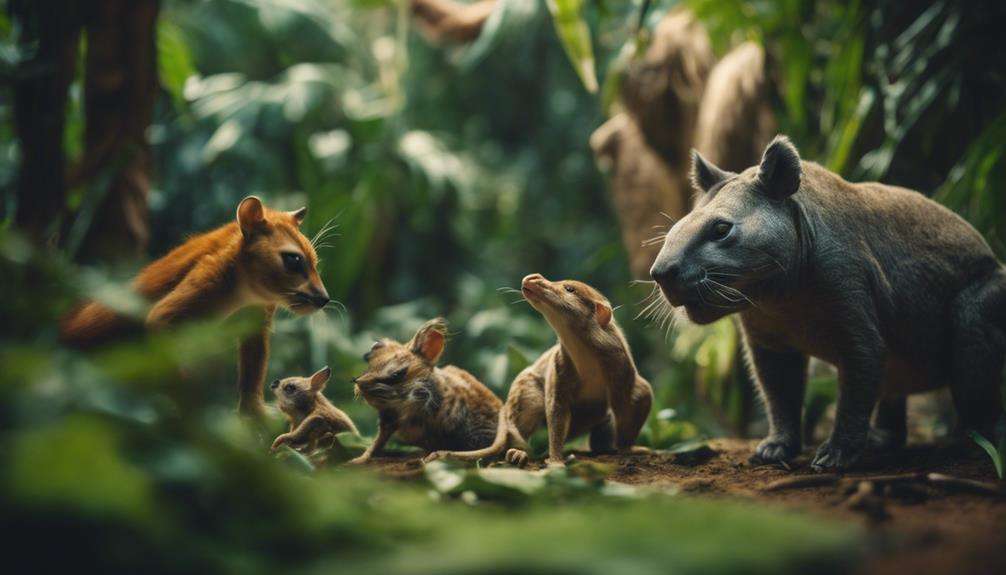So, you're considering adding an exotic member to your household – perhaps a tiger, a sloth, or even a boa constrictor.
But before you take the leap into the world of legal mammal ownership, there are crucial factors to ponder. From the complexities of caring for a porcupine to the unexpected challenges of living with an alligator, the landscape of unusual pet choices is vast.
As you navigate the realm of fascinating legal mammals available to US pet owners, be sure to tread carefully and weigh the responsibilities that come with each unique creature.
Key Takeaways
- Tigers require specialized care and expertise for legal captivity in the US.
- Giant anteaters, with their long tongues, demand attention and specific care.
- Porcupines, nocturnal climbers, need a balanced diet and regular veterinary check-ups.
- Tarantulas, with unique characteristics and silk-producing abilities, make intriguing pets for enthusiasts.
Tigers
When considering the ownership of a pet tiger in the US, it's crucial to understand the significant responsibilities and potential risks associated with caring for these majestic yet dangerous creatures. Tigers, predominantly kept as exotic pets in the US with around 5,000 in legal captivity, require specialized care due to their predatory nature. These animals, while captivating, possess instincts that make them potentially hazardous if not properly handled. The wild tiger population stands at approximately 3,890 individuals, underscoring the importance of captive populations for conservation efforts.
Proper expertise is essential for those considering tiger ownership. Tigers demand a large diet and significant space to roam, mimicking their natural habitat as closely as possible. Owners must be prepared to invest time, effort, and resources to ensure the well-being of their pet tiger. Legal regulations surrounding exotic pet ownership vary by state, highlighting the necessity for potential owners to thoroughly research and understand the laws governing tiger possession.
Anteater
Anteaters, known for their remarkable feeding habits and distinctive physical features, present unique challenges for individuals considering them as exotic pets in the US. Giant anteaters, legal to own as exotic pets in the United States, possess the longest tongue in the animal kingdom, allowing them to consume an impressive 30,000 bugs daily.
The specialized care requirements of anteaters make them demanding pets, both in terms of attention and finances. While their appeal as unique companions is evident, potential owners must be prepared for the commitment. Notably, the famous artist Salvador Dali had a pet anteater, showcasing their allure as exotic pets.
To ensure the well-being of anteaters in captivity, it's crucial to provide them with a specific diet and environment that mimics their natural habitat. Therefore, before deciding to welcome an anteater into your home, it's essential to thoroughly research and understand the responsibilities involved in caring for these fascinating creatures.
Porcupine
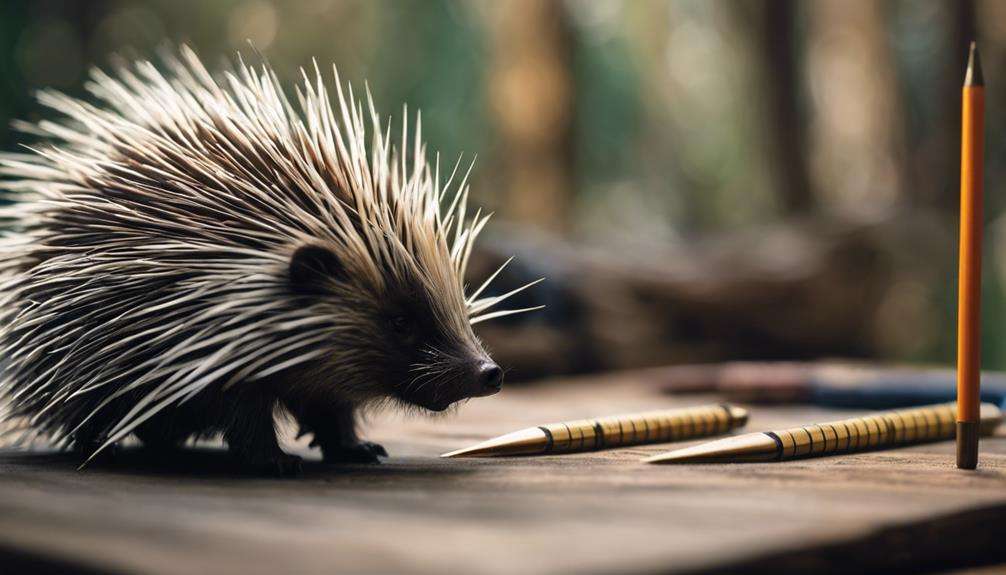
Porcupines, with their keratin-made quills that can grow up to 12 inches long, require specific care tips due to their unique defense mechanism. Understanding porcupine behavioral traits, such as their nocturnal habits and adept climbing and swimming skills, is crucial for responsible ownership.
Learning how porcupines use their quills to ward off threats can help pet owners create a safe and suitable environment for these intriguing creatures.
Porcupine Care Tips
With the ability to grow up to 30,000 quills on their bodies, proper care for porcupines is essential for their well-being. Porcupines, being herbivores, require a diet rich in leaves, fruits, and plants to thrive.
As nocturnal creatures, they're most active during the night, necessitating a suitable environment that accommodates their natural behavior. Ensuring a secure enclosure is vital as porcupines use their quills for defense by erecting them when feeling threatened.
Regular veterinary check-ups and a well-balanced diet are crucial for maintaining their health and longevity. With proper care, porcupines can live up to 20 years in captivity, providing companionship and fascination to their owners while respecting their unique needs.
Porcupine Behavioral Traits
Behaviors exhibited by porcupines reveal a fascinating array of characteristics that highlight their adaptability and survival strategies in the wild. These solitary creatures prefer to be alone, with a nocturnal nature that makes them most active during the night.
Communication among porcupines involves various vocalizations such as grunts, moans, and tooth chattering. With a sharp sense of smell and hearing, porcupines excel in navigating their environment and evading threats.
Their adept climbing and swimming abilities further aid in foraging for food and escaping predators. Whether scaling trees or navigating waterways, porcupines utilize their skills to thrive in diverse habitats, showcasing their remarkable behavioral traits for survival.
Tarantula
Tarantulas, fascinating arachnids renowned for their distinctive features and predatory skills, are commonly sought after by exotic pet enthusiasts in the United States. These exotic pets belong to various tarantula species, each with unique characteristics that make them intriguing additions to captivity.
Tarantulas, as predators, rely on their fangs to inject venom into prey, immobilizing them for consumption. In captivity, some tarantula species have astonishing lifespans, with the oldest recorded tarantula reaching over 40 years. One of the most fascinating aspects of tarantulas is their molting process, where they shed their exoskeleton to accommodate growth.
Additionally, tarantulas showcase their predatory prowess through the use of silk-producing spinnerets, creating webs for hunting and protection. Their diverse sizes and colors, ranging from vibrant hues to intricate patterns, further add to the allure of these captivating arachnids.
Alligator
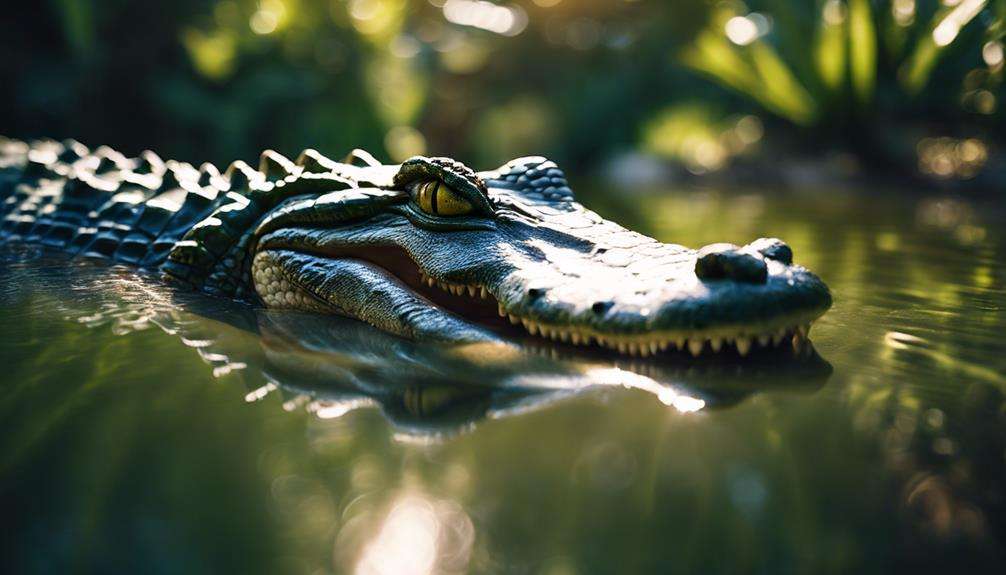
Legal in some states with specific care requirements, alligators can be fascinating yet challenging pets for those willing to provide the necessary dedication and resources.
If you're considering having an alligator as a pet, here are some important points to keep in mind:
- Legal Status: Check the regulations in your state to ensure that owning an alligator is permitted. Some states may require special permits or licenses.
- Housing and Care: Alligators need a large, secure enclosure with access to both land and water. They require a diet of fish, insects, and occasionally small mammals. Proper heating and lighting are crucial for their well-being.
- Safety Considerations: Alligators, especially as they grow older, can pose significant risks to owners and bystanders. Understanding their behavior and implementing safety measures is essential to prevent accidents. Always be cautious when interacting with these exotic pets to ensure everyone's safety.
Llama
Possessing a striking appearance and gentle demeanor, llamas are fascinating creatures often sought after as therapy animals for their calming influence and loyalty. As a pet llama, their low-maintenance nature makes them ideal companions. These intelligent animals are known for forming strong bonds with their owners and are loyal and affectionate.
To ensure their well-being, llamas require ample outdoor space to roam and graze comfortably. Their protective instincts are remarkable, as they've been observed warding off potential threats to their herd. When considering a pet llama, it's important to appreciate their need for space and their tendency to exhibit protective behaviors.
With proper care and attention, llamas can become loyal companions, offering not only emotional support but also a unique and enriching bond.
Boa Constrictor
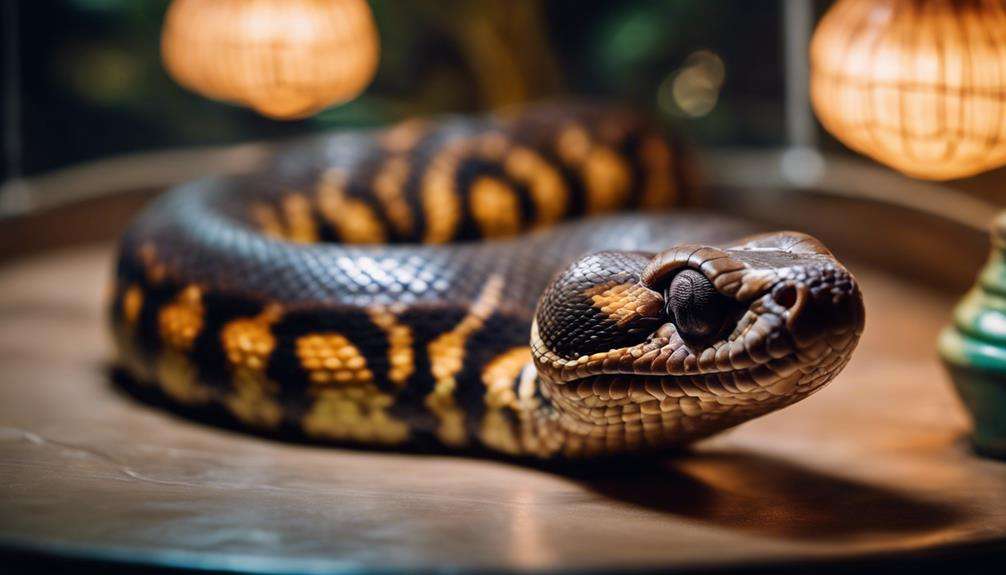
Boa constrictors are regulated pets due to their size and potential danger if not handled properly. These reptiles need spacious enclosures with specific heating and humidity levels to mimic their tropical habitat.
Providing a diet of pre-killed prey like rats or mice is essential for their well-being.
Regulations for Boas
When considering regulations for owning a Boa Constrictor, it's essential to understand the specific enclosure requirements mandated by authorities in various states across the US. Boa constrictors are legal to own in many states, but regulations regarding their care and housing vary. Here are some key points to keep in mind:
- Some states allow the ownership of boa constrictors with proper permits and documentation.
- Boa constrictors have a specialized diet of pre-killed prey, such as rodents, to meet their nutritional needs.
- Enclosures for boa constrictors must provide simulated tropical conditions, including appropriate heat and humidity levels, to ensure their well-being.
Housing Requirements
To provide optimal care for your Boa Constrictor, it's crucial to ensure their housing meets specific requirements for space, heating, humidity, and environmental enrichment.
Boa constrictors, as exotic pets, need spacious enclosures that allow them to stretch out fully. It's vital to have a secure lid on the enclosure as these snakes are skilled escape artists. Including climbing branches and hiding spots in their habitat is essential for their mental stimulation and well-being.
Maintaining appropriate humidity levels is also critical for their health. Boas are sensitive to temperature changes, so it's important to provide a consistent and warm environment. Keeping their living space clean helps prevent respiratory infections and other health issues, ensuring a healthy and happy Boa Constrictor.
Two-Toed Sloths
Two-toed sloths, exotic pets with high-maintenance care requirements due to their specific environmental needs, are legal to own in some states. These fascinating creatures have a slow-moving nature as a defense mechanism and require a specialized diet and habitat to thrive.
Here are some key points to consider when caring for two-toed sloths:
- Specific Dietary Requirements: Sloths need a diet rich in leafy greens, fruits, and vegetables to meet their nutritional needs. Providing the right balance of nutrients is crucial for their health and well-being.
- Tropical Environment: Creating a habitat that mimics a tropical rainforest is essential for two-toed sloths. They require high humidity levels and access to branches for climbing and hanging, replicating their natural environment.
- Special Care: Owners must be prepared to invest time and effort into understanding the unique needs of sloths. Regular veterinary check-ups, enrichment activities, and proper handling techniques are essential for ensuring the happiness and longevity of these captivating creatures.
Bear

With their potential for sudden dangerous behavior and powerful jaws, bears present unique challenges for those considering them as pets. Bears, categorized as wild and exotic animals, can form affectionate relationships with humans, but their wild instincts may lead to unexpected aggression. Many cautionary tales exist of bears attacking their owners or others unpredictably, highlighting the risks of keeping bears as pets. Bears possess formidable jaws that can inflict serious harm if they feel threatened or agitated.
Despite these risks, some individuals have successfully kept bears as pets through careful handling, expertise, and understanding of bear behavior. It's essential for those contemplating bear ownership to recognize the unpredictable nature of these animals and the potential consequences of their sudden dangerous behaviors. Proper precautions, extensive knowledge, and a deep respect for the wild instincts of bears are crucial for those who choose to keep them as pets.
Frequently Asked Questions
What US States Allow Exotic Pets?
In the US, legal restrictions on exotic pets vary by state. Some popular choices include reptiles and small mammals. Licensing requirements, exotic pet sanctuaries, and local ordinances play a crucial role in regulating ownership and ensuring animal welfare.
What Is the Coolest Pet to Own?
You might find that the coolest pet to own is not just one, but many! Exotic reptiles, unusual birds, rare rodents, unique amphibians, and exotic insects offer a diverse and fascinating array of options for pet enthusiasts.
What Is the Best Exotic Animal to Have as a Pet?
When considering the best exotic animal for a pet, look for unique companionship, specific care requirements, legal considerations, potential behavioral challenges, and bonding opportunities to determine the ideal fit for your lifestyle and preferences.
What Is the Easiest Exotic Pet to Take Care Of?
Looking for a unique companion that's low maintenance and easy to care for? Capybaras offer exotic charm with minimal effort. Their social nature allows for easy bonding, making them a delightful addition to your household.
Conclusion
In conclusion, as a US pet owner, you have a wide array of legal exotic mammal options to consider. Each species, from the majestic tiger to the quirky anteater, presents its own unique challenges and care requirements. Carefully research and understand the specific needs of these fascinating animals before bringing them into your home.
Like a colorful puzzle, each legal mammal adds a unique piece to the intricate tapestry of exotic pet ownership.
